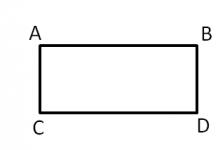Jaguar X-Type(body code - X400) is the most popular model in the line of the British company, which was produced from 2001 to 2009. What distinguishes it from all other models is the fact that it was the only one produced as a station wagon.
Specifications Jaguar X-Type
(2001-2009)
| Basic data | |
| Manufacturer | Jaguar Cars |
| Years of production | 2001-2009 |
| Class | Compact executive car |
| Body type | 4-door |
| Layout | front engine front-wheel drive front engine all-wheel drive |
| Mass-dimensional | |
| Length | Sedan: 4672 mm Sedan 2009: 4716 mm Station wagon 2004-2008: 4710 mm |
| Width | 1790 mm |
| Height | Sedan: 1390 mm Sedan 2009: 1430 mm Station wagon 2004-2008: 1480 mm |
| Wheelbase | 2710 mm |
| Characteristics | |
| Engine | 2.0L ZSD-420 I4 (TD) 2.0 L AJ20 V6 (petrol) 2.2 L ZSD-422 I4 (TD) 2.5 L AJ25 V6 (petrol) 3.0 L AJ30 V6 (petrol) |
| Transmission | 5-st. mechanical 6-st. mechanical 5-st. automatic 6-st. automatic |
History of creation
At the turn of the millennium, Jaguar marketers paid attention to the German D-class models, which were rapidly gaining popularity - the BMW 3 Series, Mercedes C-Class, and Audi A4. They were not unaware of the rising cost of these cars, which began to approach the more prestigious E segment.
Naturally, the company was required to create a powerful competitor. And they took this issue extremely seriously. $400,000,000 was allocated for the development of the new model. These funds were used to modernize the enterprise located in the county of Merseyside. The body panel pressing line and the paint shop were updated (by 70%), and new assembly lines were installed. To transport the Jaguar X-Type from the workshops to sale, a railway line was connected to the plant. In addition, the staff did not stand aside - each employee spent about 350 hours on advanced training.
In addition, the Jaguar X-Type implemented many ideas that were previously absent in the company's models - all-wheel drive, transverse engine arrangement, dimensions, platform from Mondeo.
Exterior
The appearance turned out great. The 4 branded headlights have not gone away, and between them there is a radiator grille, divided into 2 halves by a chrome edging, which is why it resembles the “nostrils” from BMW. The front bumper, made in a classic style, stood out not only with lining on the sides, but also with an elongated air intake, the edges of which rested on the fog lights. The sloping hood received an interesting shape, which went well with the optics, and the front part was decorated with a jaguar figurine - the company emblem.
From the side, the Jaguar X-Type looks solid and stylish. The curved embossing running through the entire profile creates the illusion of restraint; the sloping roof at the rear goes well with the massive doors and large glass area. The aggressiveness of the car is given by powerful wheel arches and no less impressive wheels made with 5 double spokes.
The rear part of the body is created quite original. The convex shape of the trunk lid fits well with the lights, which have no sharp corners in their outlines. The stylish bumper sparkles with cleanliness and does not have any covers or reflectors. A bifurcated exhaust completes the whole thing.
Engine
The model was equipped with a lot of different power units, which were constantly modernized and improved. In addition, there are 2 periods:
- From 2001 to 2008;
- From 2008 to 2009;
From 2001 to 2008;
Diesels
2.0 TD

Photo: Engine Jaguar X-Type 2.0 TD
The list opened with a 2-liter turbodiesel equipped with direct injection technology. Its power was 130 hp. With. at 3,800 rpm, while the torque at 1,800 rpm reached 330 Nm.
The engine had a transverse layout, 16 valves, 2 overhead camshafts and an inline four-cylinder layout. The dynamics are not bad - 9.9 seconds. up to a hundred and 201 km/h maximum speed.
2.2 TD
This power unit was installed on the car from 2005 to 2008. Its power reaches 155 hp. With. at 3,500 rpm, with a thrust of 360 Nm of torque at 1,800 rpm. Structurally, it is similar to the previous motor. Acceleration to hundreds is 8.9 seconds, and the speed ceiling is 220 km/h.
Gasoline
2.0 V6

Photo: Engine Jaguar X-Type 2.0 (petrol)
This V-shaped six-cylinder unit produces 156 hp. With. at 6,800 rpm, and its torque at 4,100 rpm is 196 Nm. This engine has two overhead camshafts, 24 valves and a distributed injection system. It takes 9.4 seconds. reaches 100 km/h, and the maximum speed reaches 210 km/h.
2.5 V6
This engine has the same design as the 2-liter, the only difference is in the working volume. Its 196 l. With. at 6,800 rpm, together with 241 Nm of torque (at 3,000 rpm), guarantee acceleration to hundreds in 8.3 seconds. and the peak speed is 225 km/h.
3.0 V6
This is the most powerful powertrain in the Jaguar X-Type. However, structurally it is not fundamentally different from its predecessors. At the same 6,800 rpm there is a peak power of 231 hp. s., and at 3,000 rpm – 279 Nm of torque. The dynamics of this motor are excellent - only 7 seconds. up to 100 km/h, as well as 235 km/h maximum speed.
From 2008 to 2009
Diesels
2.0 TD
Restyling slightly reduced the power of this diesel engine - to 128 hp. With. And the torque increased by 1 Nm – to 331 Nm. All other indicators and characteristics remained the same - dynamics of 9.9 seconds. and peak at 201 km/h.

Photo: Engine Jaguar X-Type 2.5 (petrol)
2.2 TD
But the performance of this Jaguar X-Type power unit fell more significantly. Power decreased from 155 hp. With. up to 143 l. s., but at the same 3,500 rpm. And the torque increased from 360 to 366 Nm, at the same 1,800 rpm. This noticeably worsened the dynamics - from 8.3 sec. up to 8.9 seconds, but the maximum speed has not changed - 220 km/h.
2.2 TD
This motor is the same in design, but due to different electronic settings, its output is 152 hp. With. at 3,600 rpm, and the torque is the same - 366 Nm at 1,800 rpm. In 8.9 seconds. it reaches 100 km/h, and can accelerate the car to 220 km/h.
Gasoline
2.0 V6, 2.5 V6, 3.0 V6
These power units have not changed in any way, and the updated model received it in its original form. Their design, power, traction, dynamics and other indicators remain the same.
checkpoint
The gearboxes on the Jaguar X-Type were proven and repeatedly tested transmissions. This is a 5-speed manual transmission, as well as a 5-speed automatic transmission. There are no claims made against them. The “mechanics” are clear and short-stroke, the AT clearly handles shifts and reacts “kick-down” in a timely manner.
Chassis

Photo: Jaguar X-Type station wagon
The chassis of the Jaguar X-Type is characterized by good driving characteristics and reliability. The front axle was equipped with standard MacPherson struts, along with double wishbones.
A fully independent, multi-link suspension was also mounted on the rear axle, which was mounted on a subframe. This solution guarantees not only excellent handling qualities, but also vibration leveling and background noise reduction. In addition, a sports version of the chassis was available, similar in design, but more rigid.
Interior

Inside, the Jaguar X-Type features a styling similar to that of the . The 4-spoke multi-steering wheel is comfortable and has an optimal cross-sectional thickness. Immediately behind this is a crisp and clear instrument panel, with large tachometer and speedometer dials, as well as small gauges located on the sides. For better readability, white calibration was applied on a black background.
The curves of the dashboard, with large wooden inserts, are very elegant, and the impressive center console houses all the controls, along with a small display. The seats are moderately soft and comfortable. However, on sports modifications, branded sports seats were installed.
The visibility of the car is excellent, the mirrors are large, nothing blocks the field of view. And there is enough space in the back, and it’s not for nothing that the Jaguar X-Type is larger than its “classmates” in size. It is worth remembering about safety. In particular, the torsional strength of the body is approximately 30% greater than that of cars from the German concern, which was considered the leader in the segment.
General information about the model
X− Type is a luxury class D car from the British company Jaguar, built on the Ford Mondeo platform. It was produced in sedan and station wagon body styles. The first all-wheel drive vehicle in the company's history. A little later, a front-wheel drive modification appeared, which greatly shocked true fans of classic rear-wheel drive Jaguars. The car was produced at a plant in the English county of Merseyside, where the Ford Escort was previously assembled. The company spent more than $400 million redesigning the equipment. New body and interior assembly lines were built, paint booths and the conveyors themselves were updated. To transport products abroad, a separate railway line was connected to the plant, along which about 90% of the cars produced were transported. All plant personnel received additional training. On average, each specialist attended 360 hours of lectures.
In 1999, the board of directors of Ford Motor Co, in order to save the British company from bankruptcy, instructed Jaguar managing director Jonathan Browning to develop and launch a new business-class sedan. The project was codenamed X400. The team of the English company had to develop a completely new car that would succinctly fit into the Jaguar style, with excellent dynamics, a high level of comfort, good build quality and, at the same time, an attractive price. It is worth noting that the last compact sedan in the English family, the Jaguar Mark 1, was developed in 1955.
To reduce production costs, when creating the car, we used the existing platform from the third generation Ford Mondeo. To convert it into an all-wheel drive model, and even with a transverse power unit, the engineers had to work a lot of magic on it.
And so, two years later, in February 2001, at the Geneva Motor Show, the X− Type was first presented to the general public. The presentation of the new model became the highlight of the entire exhibition. Tests carried out by journalists confirmed to the public that, despite its size, this is still a real Jaguar. Recognizable body features, powerful engines, luxury in the cabin and permanent all-wheel drive amazed visitors to the car show.
In 2003, the car underwent a light restyling. The updated model received a new 2.0 liter Ford Duratorq turbocharged diesel engine with 130 hp. In addition, front-wheel drive modifications of the X− Type went on sale, and in 2004 the X− Type Estate station wagon was released. The model was in good demand. Despite this, having undergone minor changes in 2005 and 2008, Jaguar still had to retire. On July 15, 2009, due to Ford's financial problems, the concern's management announced the cessation of production of the X−Type.

Technical features and characteristics
Most often on Russian roads there are specimens with a 2.5 liter V6 engine. The engine is quite high-torque - the variable length of the intake manifold allows for maximum torque in the range from 2500 to 6000 rpm. The cylinder camber of 60° dampens almost all vibrations during operation of the power unit. Cars with the 2.1-liter Ford diesel engine that appeared later were also in good demand. Interesting fact: when idling, this engine makes a purring sound similar to a cat purring. The company's specialists claim that their mechanics worked for a very long time and specially reconfigured the intake system for the sake of such a thoroughbred sound.

Transmissions are Ford 5-speed manual and Japanese automatic. Manual transmissions are distinguished by their reliability and unpretentiousness, which cannot be said about “automatic” cars of the first two or three years of production. Jaguar even carried out a recall campaign to replace the automatic transmission. Their clutches often burned and gears shifted incorrectly. The all-wheel drive is built according to the classic scheme, where 60% of the torque falls on the rear axle, and 40% on the front axle. When wheels slip, with the help of sensors, torque is redistributed to an axle with a high coefficient of adhesion.

The body rigidity of the X−Type is almost 30% higher than the previous leader, the BMW 3 Series. A well-designed suspension provides the car with good handling and the absence of unnecessary vibration and noise. At the front there is a reliable MacPherson strut on double wishbones, at the rear there is a completely independent multi-link system, assembled, like the front one, on a subframe. There were some minor comments about squeaks in the rear suspension, but the problem was quickly eliminated by replacing a couple of silent blocks. Sport version cars are equipped with retuned front and rear suspension, larger wheels, and sports seats.
The interior of the car is quite cozy. Real wood inserts and leather upholstery elements will not fade over time. The plastic of the instrument panel is high quality. The ergonomics of the driver's seat are quite well thought out. There's plenty of space in the front, but it's a bit cramped in the back. It's almost impossible for three of us to sit. And getting into the second row of seats is difficult. The blowing of the windshield causes complaints - ice forms on the upper part of it, which cannot be removed even by turning on the heater at maximum power.
British engineers paid great attention to the safety of the car. All possible accident scenarios were studied. Even as standard, the car has eight airbags. Also in the database there is already ABS with traction control and anti-skid systems, electrically heated mirrors, electric windows and mirrors, an audio system, 16-inch alloy wheels, air conditioning and fog lights
Exploitation
As a rule, operating a vehicle in difficult conditions entails additional costs. When using low-quality fuel containing a large amount of sulfur, you will have to change the spark plugs every 20-30 thousand kilometers - this is not a cheap procedure, since this requires removing the intake manifold.
Approximately every 50,000 km, the injection system injectors will need to be cleaned to remove various deposits. Catalysts (there are two of them in X) also rarely travel more than 90 thousand km - replacing them will cost a pretty penny.
The suspension on the car is quite durable: even the struts and stabilizer bushings can last 30-40 thousand kilometers without problems. Most often, rubber suspension elements, such as silent blocks of levers, require replacement. But brake pads rarely last more than 35,000 km.
The body of the model is strong, galvanized. But you can often notice examples with peeling paint on the rear wheel arches - a consequence of the effects of anti-ice reagents that are so generously sprinkled on our roads. But rust on the body is most likely due to poor quality body repairs.
The main disadvantage of the car is its low liquidity on the secondary market. There is even a joke that the fastest way to sell a Jaguar is to insure it and set it on fire.
In January 2011, the company's management announced its intention to release a successor to the X−Type in 2014.

General information about the model
X− Type is a luxury class D car from the British company Jaguar, built on the Ford Mondeo platform. It was produced in sedan and station wagon body styles. The first all-wheel drive vehicle in the company's history. A little later, a front-wheel drive modification appeared, which greatly shocked true fans of classic rear-wheel drive Jaguars. The car was produced at a plant in the English county of Merseyside, where the Ford Escort was previously assembled. The company spent more than $400 million redesigning the equipment. New body and interior assembly lines were built, paint booths and the conveyors themselves were updated. To transport products abroad, a separate railway line was connected to the plant, along which about 90% of the cars produced were transported. All plant personnel received additional training. On average, each specialist attended 360 hours of lectures.
In 1999, the board of directors of Ford Motor Co, in order to save the British company from bankruptcy, instructed Jaguar managing director Jonathan Browning to develop and launch a new business-class sedan. The project was codenamed X400. The team of the English company had to develop a completely new car that would succinctly fit into the Jaguar style, with excellent dynamics, a high level of comfort, good build quality and, at the same time, an attractive price. It is worth noting that the last compact sedan in the English family, the Jaguar Mark 1, was developed in 1955.
To reduce production costs, when creating the car, we used the existing platform from the third generation Ford Mondeo. To convert it into an all-wheel drive model, and even with a transverse power unit, the engineers had to work a lot of magic on it.
And so, two years later, in February 2001, at the Geneva Motor Show, the X− Type was first presented to the general public. The presentation of the new model became the highlight of the entire exhibition. Tests carried out by journalists confirmed to the public that, despite its size, this is still a real Jaguar. Recognizable body features, powerful engines, luxury in the cabin and permanent all-wheel drive amazed visitors to the car show.
In 2003, the car underwent a light restyling. The updated model received a new 2.0 liter Ford Duratorq turbocharged diesel engine with 130 hp. In addition, front-wheel drive modifications of the X− Type went on sale, and in 2004 the X− Type Estate station wagon was released. The model was in good demand. Despite this, having undergone minor changes in 2005 and 2008, Jaguar still had to retire. On July 15, 2009, due to Ford's financial problems, the concern's management announced the cessation of production of the X−Type.

Technical features and characteristics
Most often on Russian roads there are specimens with a 2.5 liter V6 engine. The engine is quite high-torque - the variable length of the intake manifold allows for maximum torque in the range from 2500 to 6000 rpm. The cylinder camber of 60° dampens almost all vibrations during operation of the power unit. Cars with the 2.1-liter Ford diesel engine that appeared later were also in good demand. Interesting fact: when idling, this engine makes a purring sound similar to a cat purring. The company's specialists claim that their mechanics worked for a very long time and specially reconfigured the intake system for the sake of such a thoroughbred sound.

Transmissions are Ford 5-speed manual and Japanese automatic. Manual transmissions are distinguished by their reliability and unpretentiousness, which cannot be said about “automatic” cars of the first two or three years of production. Jaguar even carried out a recall campaign to replace the automatic transmission. Their clutches often burned and gears shifted incorrectly. The all-wheel drive is built according to the classic scheme, where 60% of the torque falls on the rear axle, and 40% on the front axle. When wheels slip, with the help of sensors, torque is redistributed to an axle with a high coefficient of adhesion.

The body rigidity of the X−Type is almost 30% higher than the previous leader, the BMW 3 Series. A well-designed suspension provides the car with good handling and the absence of unnecessary vibration and noise. At the front there is a reliable MacPherson strut on double wishbones, at the rear there is a completely independent multi-link system, assembled, like the front one, on a subframe. There were some minor comments about squeaks in the rear suspension, but the problem was quickly eliminated by replacing a couple of silent blocks. Sport version cars are equipped with retuned front and rear suspension, larger wheels, and sports seats.
The interior of the car is quite cozy. Real wood inserts and leather upholstery elements will not fade over time. The plastic of the instrument panel is high quality. The ergonomics of the driver's seat are quite well thought out. There's plenty of space in the front, but it's a bit cramped in the back. It's almost impossible for three of us to sit. And getting into the second row of seats is difficult. The blowing of the windshield causes complaints - ice forms on the upper part of it, which cannot be removed even by turning on the heater at maximum power.
British engineers paid great attention to the safety of the car. All possible accident scenarios were studied. Even as standard, the car has eight airbags. Also in the database there is already ABS with traction control and anti-skid systems, electrically heated mirrors, electric windows and mirrors, an audio system, 16-inch alloy wheels, air conditioning and fog lights
Exploitation
As a rule, operating a vehicle in difficult conditions entails additional costs. When using low-quality fuel containing a large amount of sulfur, you will have to change the spark plugs every 20-30 thousand kilometers - this is not a cheap procedure, since this requires removing the intake manifold.
Approximately every 50,000 km, the injection system injectors will need to be cleaned to remove various deposits. Catalysts (there are two of them in X) also rarely travel more than 90 thousand km - replacing them will cost a pretty penny.
The suspension on the car is quite durable: even the struts and stabilizer bushings can last 30-40 thousand kilometers without problems. Most often, rubber suspension elements, such as silent blocks of levers, require replacement. But brake pads rarely last more than 35,000 km.
The body of the model is strong, galvanized. But you can often notice examples with peeling paint on the rear wheel arches - a consequence of the effects of anti-ice reagents that are so generously sprinkled on our roads. But rust on the body is most likely due to poor quality body repairs.
The main disadvantage of the car is its low liquidity on the secondary market. There is even a joke that the fastest way to sell a Jaguar is to insure it and set it on fire.
In January 2011, the company's management announced its intention to release a successor to the X−Type in 2014.

AutoWeek magazine's 2001 Editor's Choice Award on February 28, 2001 was awarded to Jonathan Browning, Jaguar's managing director, for the most significant new product at the Geneva Motor Show. The new Jaguar X-Type compact business class sedan was presented for the first time. From this moment began the dramatic story of the successor to the traditions of the well-deserved Jaguar brand.
Codenamed X400, the Jaguar X-Type was the first compact 4-door sedan since the 1955 Jaguar Mark 1. The BMW 3 Series was chosen as the main competitor. The new compact Jaguar received the Ford Mondeo platform, but in order to make a fundamental difference, it was made with all-wheel drive and equipped with 2.5- and 3.0-liter AJ-V6 gasoline engines.
The external contours of the X-Type are classic Jaguar shapes with smooth lines, oval headlights with a hood, a specific radiator grille, and a rectangular elegant arched roof. Much was reminiscent of the image of the legendary XJ-series of sedans. The entire external configuration is designed from a dynamic point of view. There should be no elements that constitute resistance to air flow. From an exterior point of view, a certain discrepancy between the geometric dimensions of the front and rear parts of the car is noteworthy.

An elongated engine compartment with full-size driver's doors is adjacent to shortened rear doors and an elegant trunk. According to reviews from owners, getting into the rear seat in a Jaguar X-Type causes some difficulty. The windshield behaves strangely in winter, freezing when ice forms. Obviously, the increased tilt of the glass played a cruel joke. Warm air from the deflectors does not solve the problem.
Pretensions to a luxurious interior with wood trim and leather upholstery are lost next to cheap plastics that are similar to the plastics of Ford rental cars. The creaking of poorly fitted interior trim parts in the first years of production spoiled the impression of a fairly comfortable ride on the highway. Moreover, there were no complaints about ride comfort or ease of control. According to owners' reviews, the Jaguar X-Type of that time often suffered from on-board electronic systems. At times, the contact group of the automatic transmission selector failed. To bring the oxidized contacts into working condition, it was necessary to move the selector in different positions before turning on the ignition.
The sales plan in the first 2 years after entering the market failed and the company had to restyling in 2003. The new version of the Jaguar X-Type received front-wheel drive and a 2.0 liter Duratorq diesel engine with 130 hp. These changes have improved sales in the highly competitive automobile segment. In 2004, the company's only production station wagon based on the Jaguar X-Type, called “Estate,” was released onto the market.

The developers paid great attention to security systems. In the EuroNCAP crash test, the Jaguar X-Type received 4 stars. At the same time, all 4 X-Type models: S, SE, Sport Premium and Sovereign have very good equipment. According to many experts, Jaguar offered a rather unique car in its class. The Jaguar X-Type is a luxury car at an affordable price.
Having undergone several more changes in 2005 and 2008, due to Ford's financial problems, the Jaguar X-Type was retired. On July 15, 2009, unfortunately, it was announced that the Jaguar X-Type production program was being curtailed. In January of this year, a new announcement appeared regarding the consideration of plans for the release of a successor to the Jaguar X-Type. But this will happen in 2014.
With its triple body, the X-Type is instantly identifiable in the modern stream, standing out sharply against the backdrop of fashionable and current models. This does not honor the latter. In terms of the number of curled heads, the baby Jaguar is far from its older brothers, but the public definitely has interest in the gracefully flitting sedan. Few of its contemporary competitors can boast of this.
Reasoning soberly, the X-Type had little choice of whom to face. In flirting with the mass buyer, the British decided to rely on time-tested solutions. Not risking exploiting the exterior theme set by the S-Type, they followed the path trodden by the Germans, adapting the exterior of flagship sedans to a compact format.
Owners of classic XJs can wince as much as they want at the sight of these small round eyes, complaining about the inappropriateness of a cat mascot on the hood of an illegitimate scion of a noble family. The “big-eyed” style, a tribute to the exteriors of the great Geoff Lawson, which became synonymous with aristocracy and nobility, suited the Mondeo relative well.
|
 |
Inside
The thoroughbred appearance is echoed by the beige interior, generously decorated with wood. The metal rims on the almost vertical high instrument panel shimmer, an animal's muzzle grins from the steering wheel, an automatic machine with a pear-shaped knob walks along the signature J-shaped slot - at first glance, the difference with the older XJ is only in the volume of space surrounding you. Those who have seen the interiors of flagship sedans only in pictures will not notice the catch.

But it doesn't feel the same, and the more I look around, the more I realize that I'm in a well-made, yet inexpensive, Jaguar XJ-themed set. Genuine leather was found only on the steering wheel, on the seats and doors - its eco-friendly substitute, and everything else was just light plastic. Finishing with the skins of innocently killed cows came at an additional cost, as did rear electric windows and an automatic transmission. Can you imagine an aristocratic “British” with a velor interior, “on a stick” and with “oars”? Wood, by the way, is also not natural.

Ford was greedy or Jaguar saved money - it doesn’t matter. The X-Type in the second-ranking configuration is not much inferior to the initial versions of its German colleagues, who similarly do not disdain eco-leather and plastic wood. For an additional fee, the interior of the Briton could be refined just as well as the S-Type. At a minimum, this requires an optional multimedia screen - an expensive, but effective way to clear the center console of buttons made of cheap black plastic.
1 / 4
2 / 4
3 / 4
4 / 4
They clearly didn't skimp on ergonomics. No high-society eccentricities were found in the logic of the button placement. Basic electric seats with only cushion height adjustment perfectly combine a comfortable, relaxed fit with the tenacity of a hug. It will also be convenient for rear passengers: the inclined bed of the sofa is conducive to long trips. But it will only be comfortable for two people and no taller than average. Unfortunately, there is no room for the legs and heads of tall individuals, and you had to pay extra for the center armrest. But the trunk, although visually small, is actually capable of taking as much as 450 liters of something.
1 / 3
2 / 3
3 / 3
In move
Engine
V6 2.1 l., 156 hp
The second Ford Mondeo is a strong mid-ranger and one of the bestsellers of the European middle class. But it was precisely because of its relationship with him that the X-Type was regularly trolled. The excuse that no more than 20% of Ford parts were used in the design did not always help. Most of all there were differences from the initial versions. Front-wheel drive Jaguar - where is the aristocracy? But the engine, albeit 2.1 liters, is V6 - no match for the four-cylinder base engines of competitors. And in terms of power/newtons (156 hp/196 Nm) it is not an outsider: it’s worth looking at, say, the characteristics of the two-liter E46. And front-wheel drive has never stopped Audi from making good sales on simple A4 trim levels.
Excuses, justifications, what really? Listening to the whisper of the V6, the last thing you think about is the engine’s relationship with Ford’s Duratec. The soundtrack of the engine to a large extent shapes the impressions of the accelerating dynamics, the passport data of which (more than 10 seconds to a hundred) is better kept silent in polite society. The lion's share of traction is available from idle, so the X-Type leaves the station confidently, nothing more. But cat sedans are not used to running away from traffic lights; this is not a noble thing.

Transmission
Automatic transmission Jatco, 5 speed
Acceleration is smooth, almost seamless. You can’t even guess about the operation of the Japanese Jatco automatic transmission, which gently moves through its five stages, without looking at the tachometer needle. Sport mode regularly maintains higher revs without dropping below 2,000 rpm and delays shifts, but does not fundamentally change the behavior of the X-Type. Character! Therefore, there is no need to regret the absence of a manual gear selection mode. The driver only has the option of limiting the number of stages to four, three or two.
Jaguar is always a story not only about design and wood in the cabin. You just have to taste once how an English sedan creeps along the road, unquestioningly obeying the will of the owner, gently smoothing out bumps and enveloping you from head to toe in an inimitable mixture of comfort and sport - and you will never forget this. X-Type is trying its best not to disgrace the honor of the family. The ride is comfortable, the suspension is always ready for road troubles. Even more elasticity can be expected from the Sport package, but even there the rigidity of the German counterparts is as high as from London to Berlin.

The suspension is built according to a classic design. There are McPherson struts at the front and a multi-link at the rear. You shouldn’t expect the excitement of rear-wheel drive relatives, BMW and Mercedes are also from a different league, but Jaguar will definitely not become a whipping boy among other near-premium front-wheel drive cars, including Alfa Romeo, Saab and Volvo. Despite the somewhat distant steering and soft, even compliant brakes, the X-Type manages to corner accurately, making it fun to drive, and brake confidently when needed. Going for a traditional English picnic is no problem. With a ground clearance of 170 mm, by today's standards, the baby Jag is almost a crossover. Just don’t try to speed when returning after dark. At night, the “kitten” is blind - the low beam of the small headlights, imitating the XJ, is frankly weak.
Jaguar X-Type
Fuel consumption per 100 km
In contrast to the composure of competitors with their harsh chassis, the Jaguar offers softness and smoothness of behavior, which in no case turns into rolliness. Driving the X-Type relaxed in traffic is a special pleasure. Power and acceleration in such scenery and silence (noise insulation here is at a very high level) are not of decisive importance. It's funny to watch how a plastic imitation of a real English living room makes you a true gentleman on the road.

Alas, there were fewer fans of English classics at a reasonable price than expected. Sales of the X-Type never reached the planned level, and now it is not customary to remember the younger “kitten” with a kind word. Let it be so - the interested glances of others and the laudatory memories of the former owners speak for themselves.

Purchase history
Like many lovers of aristocratic technology, Evgeniy has always been crazy about the classic shape of the Jaguar XJ X308. A squat silhouette, big-eyed optics - but the feasibility of buying such a car as the main means of transport, and even on a limited budget, smacked of unhealthy adventurism. The slightly more compact S-type was dropped for aesthetic reasons, so only the youngest X-Type remained from the cat family.
The search for a worthy copy took six months - and finally an advertisement appeared in Moscow for the sale of a pre-restyling X-Type 2007 in crimson color with a beige interior and a mileage of 84,000 km. Wealthy owners were selling a Jaguar that had become unnecessary, which they had once bought for their son as his first car. Rushing to Moscow the next weekend, Evgeniy was fascinated by the stylish “British”, its body sparkling and polished to a shine. The owners did not hide the fact that there were several accidents, which, however, did not affect the strength structure of the body, but they made a good discount. For 390,000 rubles, Evgeniy became the third owner of an English sedan.
Repair
Misfires and jerks during smooth acceleration are one of the signature sores of the younger X-Type engine. Evgeniy hasn’t tried anything. The throttle, fuel pump, ignition coils, spark plugs, intake manifold gaskets, absolute pressure sensor were replaced, injectors were washed... Not at once, but more than 100,000 rubles were spent to eliminate this problem. The issue has not yet been finally resolved; the only remaining option is to replace the wires with the ignition coils.

Leaving the service center where the Jaguar's catalysts were being removed, Evgeniy was faced with the fact that the X-Type's reverse gear had stopped engaging. A break in the brake band led to repairs to the gearbox and costs in the region of 60,000 rubles. The antifreeze leak has not yet been eliminated - replacing the expansion tank has not brought any results.
The suspension is quite strong. So far, Evgeniy has only faced the replacement of bushings and stabilizer struts, shock absorber boots and hub bearings.
Exploitation
Over two years of ownership, Evgeniy increased the mileage of the X-Type to 130,000 km. He doesn't regret his choice at all.
Expenses
- regular maintenance with oil change (6 liters Castrol 5 W-30) and filters every 10,000 km – 4,000 rubles
- gasoline – AI-95
The notorious relationship with Mondeo does not always help when selecting spare parts. For example, a generator labeled Jaguar costs 40,000 rubles, while a similar Ford one can be bought four times cheaper. The opposite example is the timing belt tensioner pulley: only the original with a price of around 10,000 rubles.

Plans
The main task for the future is to eliminate the already mentioned misfires and antifreeze leaks. After solving the technical problems, Evgeniy wants to update the appearance of the X-Type by painting the front bumper to remove chips and covering the body with liquid glass.
Model history
The project of an affordable Jaguar, which received the internal factory code X400, was implemented during the time the Coventry manufacturer was part of Ford's premium division Premier Automotive Group. The British competitor to the three-ruble car BMW and Mercedes C-Class was based on the platform of the second generation Ford Mondeo, on which was installed an interior and body styled like the flagship XJ. Three years later, the sedan released in 2001 was accompanied by the Sportwagon station wagon.
 In the photo: Jaguar XJ "1994–2003
In the photo: Jaguar XJ "1994–2003 At first, only six-cylinder all-wheel drive X-Types were available with 2.5 (194 hp) and 3.0 (231 hp) engines, combined with a five-speed manual or automatic transmission. In 2003, economical front-wheel drive versions debuted: a gasoline V 6 2.1 (156 hp) and a pair of diesel engines (2.0 - 128 hp and 2.2 - 152 hp) - for the first time on a Jaguar. In 2005, the X-Type underwent a minor update. Such cars are primarily distinguished by a modified radiator grille and a new steering wheel.
 Pictured: Jaguar XJ6 "2003–07
Pictured: Jaguar XJ6 "2003–07 A large-scale restyling in 2007 slightly refreshed the timeless appearance, added new options and finishing options, and the older diesel engine was able to be equipped with a six-speed automatic transmission. Alas, the X-Type never reached its planned sales volumes, so it was discontinued in 2009.


















